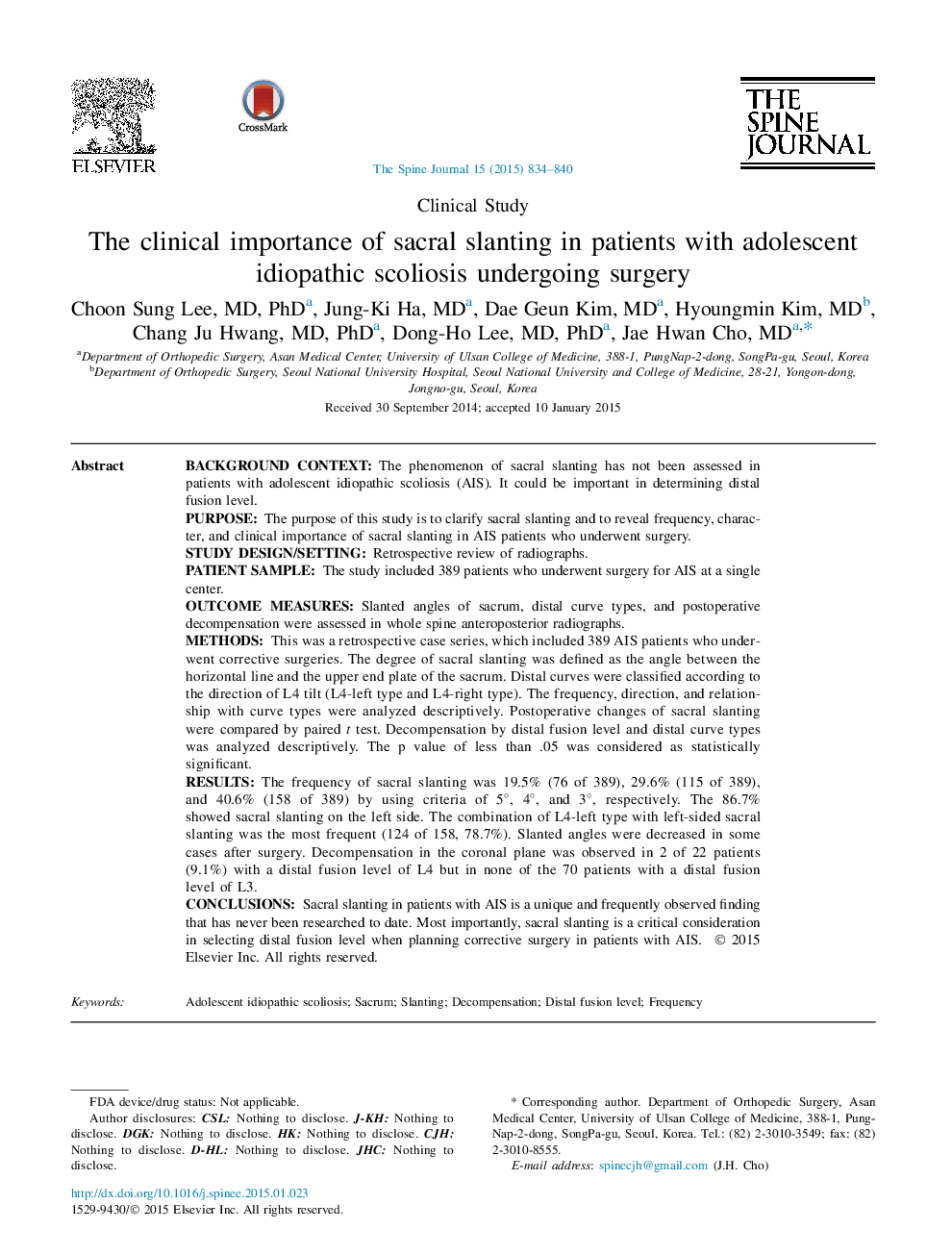| کد مقاله | کد نشریه | سال انتشار | مقاله انگلیسی | نسخه تمام متن |
|---|---|---|---|---|
| 6212008 | 1268563 | 2015 | 7 صفحه PDF | دانلود رایگان |
Background contextThe phenomenon of sacral slanting has not been assessed in patients with adolescent idiopathic scoliosis (AIS). It could be important in determining distal fusion level.PurposeThe purpose of this study is to clarify sacral slanting and to reveal frequency, character, and clinical importance of sacral slanting in AIS patients who underwent surgery.Study design/settingRetrospective review of radiographs.Patient sampleThe study included 389 patients who underwent surgery for AIS at a single center.Outcome measuresSlanted angles of sacrum, distal curve types, and postoperative decompensation were assessed in whole spine anteroposterior radiographs.MethodsThis was a retrospective case series, which included 389 AIS patients who underwent corrective surgeries. The degree of sacral slanting was defined as the angle between the horizontal line and the upper end plate of the sacrum. Distal curves were classified according to the direction of L4 tilt (L4-left type and L4-right type). The frequency, direction, and relationship with curve types were analyzed descriptively. Postoperative changes of sacral slanting were compared by paired t test. Decompensation by distal fusion level and distal curve types was analyzed descriptively. The p value of less than .05 was considered as statistically significant.ResultsThe frequency of sacral slanting was 19.5% (76 of 389), 29.6% (115 of 389), and 40.6% (158 of 389) by using criteria of 5°, 4°, and 3°, respectively. The 86.7% showed sacral slanting on the left side. The combination of L4-left type with left-sided sacral slanting was the most frequent (124 of 158, 78.7%). Slanted angles were decreased in some cases after surgery. Decompensation in the coronal plane was observed in 2 of 22 patients (9.1%) with a distal fusion level of L4 but in none of the 70 patients with a distal fusion level of L3.ConclusionsSacral slanting in patients with AIS is a unique and frequently observed finding that has never been researched to date. Most importantly, sacral slanting is a critical consideration in selecting distal fusion level when planning corrective surgery in patients with AIS.
Journal: The Spine Journal - Volume 15, Issue 5, 1 May 2015, Pages 834-840
